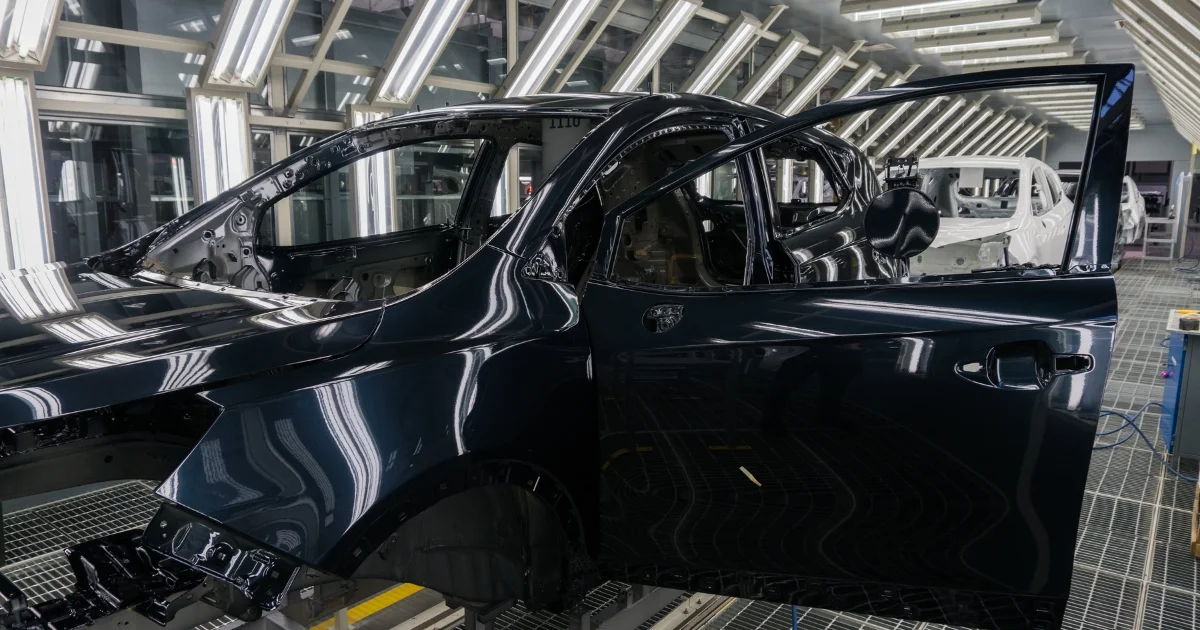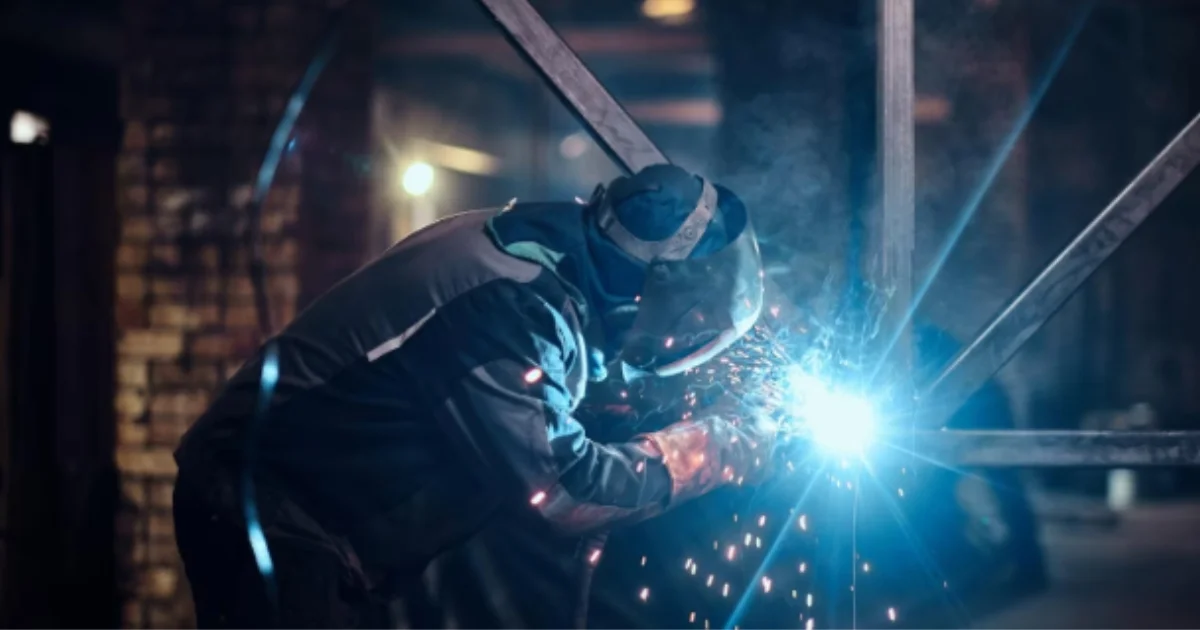
Dust and particulate blow off systems blast air to remove contaminants like dust, debris, and static to ensure that surfaces are clean and prepped for whatever's next – painting, coating, assembly, or packaging. They’re absolutely essential in many, many industries – in fact, you might be surprised just how many.
You'll find dust blow off systems in all kinds of industrial settings, from fast-moving auto plants to chip manufacturing, pharmaceuticals, food and beverage, and many more.
Speaking of applications – let’s take a closer look at dust and particulate management and highlight 5 industries where dust blow off systems are non-negotiable.
So, Where Does All This Dust Come From?
We all know that dust is everywhere. It's in our homes, our offices, and it’s definitely abundant in busy industrial facilities.
So, where does it all come from? Some sources are obvious – others, less so.
Obviously, a certain amount of dust enters from the outside environment on our clothing and through open doors, windows, and ventilation. But a lot of dust and debris is generated right here on the shop floor. Manufacturing processes like cutting, grinding, and welding create a ton of fine particles. Raw materials can also be a major source of dust, particularly when you’re dealing with powders, fibers, or food items. Recyclable packaging materials, like cardboard and wood pallets, can also shed a surprising volume of particles as they’re moved from place to place.
No matter where they came from, once tiny airborne particles have entered a facility, they’ll quickly and readily accumulate on any exposed surface – including floors, conveyor belts, machinery, clothing, and products. Dust naturally settles on surfaces due to gravity, and this process is continuous, making dust a persistent problem in environments where it's generated.
Static electricity plays a big role in dust accumulation. Surfaces and dust particles can become charged, causing the dust to stick to surfaces. This attraction makes it difficult to remove dust without specialized equipment.
In a busy industrial environment, all these factors combine to create a real dust storm. That's why it's so important to have effective dust control measures in place – and in many cases, that necessarily involves dust and particulate blow off systems.
Dust Management is More Than Just Blowing Air
Of course, dealing with dust and particulate matter in an industrial setting takes more than just blasting it away. It takes a strategically designed and well-thought-out system to make sure that dust is continuously dislodged, collected, and kept from recirculating.
A. Dislodging Dust
First things first, you've got to get that dust moving. Sometimes, a good blast of air is enough to dislodge loose particles. A typical dust blow off system includes a blower, ducts or pipes, nozzles, and a collection system.
The system kicks off with the blower generating airflow. This airflow is then channeled through the network of ducts to strategically placed nozzles or air knives. These focus the air, targeting the areas where dust and debris accumulate. The blower creates the airflow, the ducts guide it, the nozzles or air knives focus it.
But what about that stubborn dust that's clinging on thanks to static? Air alone might not cut it, and even if it does, static can cause dust particles to re-attach. To address this, a specialized static bar can be mounted to an air knife to charge the air with ions. This neutralizes the static charge, making the dust much easier to dislodge and preventing reattachment.
B. Collecting Dust
Once the dust is dislodged, you need to make sure it doesn't just resettle. This means installing a ventilation or dust collection system to capture the dust and draw it away. This system is most effective when it’s designed to capture the specific types of dust generated in the facility based on factors such as particle size, weight, and other characteristics.
C. Filtering Air
The final step involves filtering the air to reduce the overall dust levels in the facility. HEPA (High-Efficiency Particulate Air) filters can remove a very high percentage of even the smallest dust particles.
Depending on the industry and type of dust, specialized filters may be used, such as those designed for specific chemicals or hazardous materials.
Regular filter replacement and maintenance are necessary to keep your dust control system running smoothly and effectively.
Where You'll Find Dust Blow Off Systems in Action
Dust blow off systems are real workhorses in many different industries – keeping products and equipment clean, making production smoother, and just generally making life easier for engineers. Let's look at where they shine.
1. Automotive Industry
The auto industry relies heavily on dust blow off systems throughout its manufacturing process, especially on paint lines. These systems help ensure that car bodies and parts are free from contaminants before and after painting or coating.
Before applying a coat of paint to a car, you need a perfectly clean and smooth surface for the paint to adhere to. Imperfections beneath the paint, no matter how small, can show through the final finish, compromising the overall look. Dust in the paint lines can cause all sorts of problems, from air bubbles and pinholes to poor adhesion.
Blow off works even in hard-to-reach areas. It eliminates the need for costly repaint jobs. A gentle, heated blast of air can also help accelerate the drying process of the paint, improving efficiency.
Off the paint line, blow off systems are used to clean engine components, interior parts, and other automotive parts before assembly and/or after painting or coating.
2. Electronics Manufacturing
Dust is a big problem in electronics manufacturing. Even tiny particles can cause major malfunctions in sensitive electronic components.
Printed circuit boards (PCBs), for example, are particularly vulnerable to dust and particulate contaminants. After drilling, soldering, and other processes, they need a thorough yet gentle cleaning to remove flux residue, dust, and other contaminants. Connectors, switches, and sensors also need to be free of dust and debris. A quick blast of air can make all the difference in their performance.
Unlike compressed air, which contains trace amounts of oil and water, a purpose-built blow off system is a safe and effective way to produce clean, dry PCBs.
Dust blow off systems for electronics manufacturing often include static control to ensure the highest level of cleanliness and prevent static charge buildup.
3. Metal Fabrication and Machining
In metal fabrication and machining, precision is key. And you know what gets in the way of precision? Dust.
Welding, for example, can create a lot of mess. You've got spatter, slag, and other debris flying around. A good blow off system can clear all that away, both before and after welding. This helps ensure clean welds and preps the workpiece for whatever comes next, whether it's further processing or finishing.
Machining is another dust-generating process. Metal chips, cutting fluids, and other residues can build up on parts, affecting their quality and potentially causing problems in later operations. Blow off systems are perfect for cleaning those parts between operations. They can be integrated right into machining centers or used as standalone units – whatever works best for your setup.

4. Food Processing and Packaging
In the food industry, hygiene is everything. You can't have crumbs and food particles contaminating the next batch of products.
Dust blow off systems are used to clean conveyor belts used in food production, removing crumbs, food particles, and other debris to maintain hygiene and prevent cross-contamination.
Packaging also needs to be spotless. Before you fill those trays and containers, you need to make sure they're free of any dust or debris. A quick blast of air can ensure product safety and quality.
Don't forget about the equipment itself. Blow off systems can help keep things clean and sanitary, reducing the risk of contamination.
5. Pharmaceuticals
One big challenge in pharma is powder handling. Medications, supplements, and other products cannot be shipped with any powder residue clinging to the packaging. Instead of wiping everything down by hand, a blow off system can remove that powder quickly and efficiently, without any manual contact.
Some pharmaceutical production takes place in cleanroom environments. Dust blow off systems play a key role in maintaining these environments by way of an air shower – a self-contained chamber that uses high-velocity filtered air to remove contaminants from people and things before they enter the cleanroom.
Keep Your Operations Clean and Efficient
As we've seen, dust blow off systems are essential for maintaining cleanliness, product quality, and efficiency in a wide range of industries. Whether you're in automotive production, pharmaceuticals, or any other industry that needs to keep things spotless, these systems are non-negotiable.
At Air Force 1, we've got a ton of experience designing and installing custom blow off systems engineered to specific industry needs. We design and build complete, custom systems that include our patented nozzles, blowers, and air knives, along with necessary ductwork, to tackle any dust-related challenge you throw our way.
Want to improve cleanliness, reduce defects, and boost efficiency in your production process? We can help. Get in touch with us today to discuss your facility’s needs.

